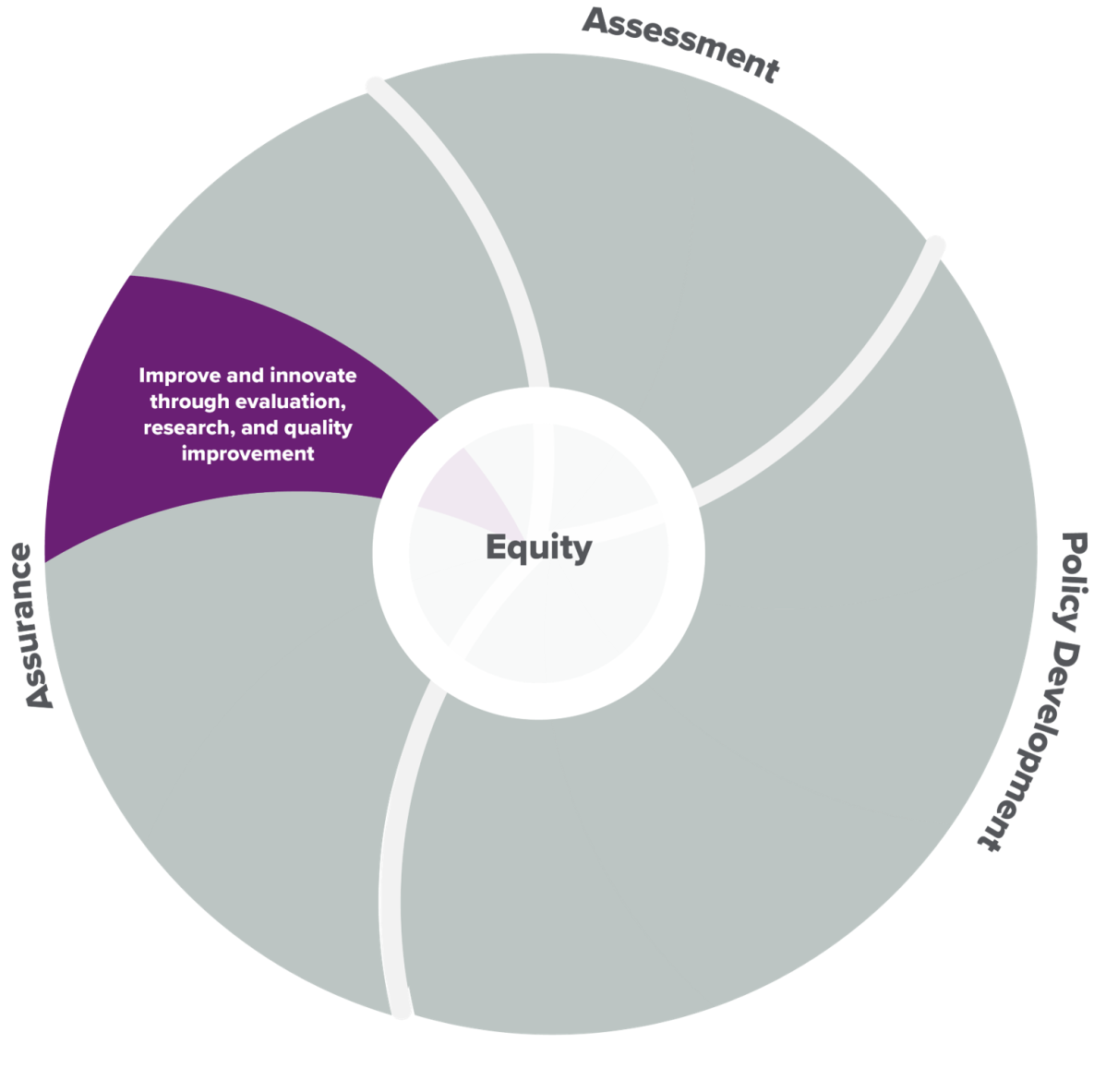ES 9 – Improve and Innovate
Essential Public Health Service 9: Improve and innovate public health functions through ongoing evaluation, research, and continuous quality improvement
Learn how environmental health programs support Essential Public Health Service 9 and public health accreditation.
These activities support Essential Service 9 (evaluation, research, and continuous improvement).
Here are some examples of common activities* that help deliver essential service 9.
Building a culture of quality in environmental health programs and using quality improvement to improve environmental health programmatic efforts.
Using research, innovation, and other data to inform program decision-making.
Contributing to the evidence base around environmental health practice.
Evaluating environmental health services, policies, plans, and laws to ensure they contribute to health and do not create undue harm.
These activities connect to PHAB standards.
Environmental health programs also link to and support broader public health initiatives such as public health accreditation. Following are examples of activities that could contribute to accreditation by the Public Health Accreditation Board (PHAB). Completing these activities does not guarantee conformity to PHAB documentation requirements.
PHAB Standard 9.1: Build and foster a culture of quality.
- Monitoring environmental public health services against established criteria for performance, including the number of services and inspections provided and the extent to which program goals and objectives are achieved for these services, with a focus on outcome and improvement (for example, decreased rate of illness and injury, decrease in critical inspection violations and factors, decrease in exposure).
- Engaging in performance management, including participation in the health department-wide system.
- Engaging in quality improvement efforts in the health department and implementing quality improvement projects to improve environmental health processes, programs, and interventions.
PHAB Standard 9.2: Use and contribute to developing research, evidence, practice-based insights, and other forms of information for decision-making.
- Collaborating with traditional and nontraditional partners (for example, advocacy groups, academia, other government departments) to identify opportunities to translate research findings to improve environmental public health practice and to analyze and publish findings of environmental health investigations to further general knowledge.
More Information
- 10 Essential Public Health Services
- 10 Essential Public Health Services Toolkit (Public Health National Center for Innovation)
- Environmental Public Health and the 10 Essential Services
*Examples are not exhaustive.
